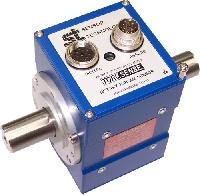Irish University Equip Labs with TorqSense

The electrical machines laboratory at the Dublin Institute of Technology (DIT) has increased its effectiveness as a teaching resource since TorqSense non-contact torque sensors from Sensor Technology were fitted to five machine sets. The sensors replace an existing system of machine monitoring that had proven inaccurate.
The demonstration equipment in the DIT machines lab uses modular construction, so for example, experiments with both AC and DC machines can be carried out on the same test bed, and whichever machine is needed is clamped into place. The experiments and demonstrations performed in the lab require the monitoring and collection of key operating parameters, including torque, speed and power.
"We had tried many methods for measuring these parameters, but had found it impossible to get results we could rely on, particularly in the case of the torque and power measurements," says Terence Kelly, technical officer at DIT. "Then we heard about the Sensor Technology's innovative products, and after we'd visited the company and seen the sensors in action, we knew that we'd found the solution we were looking for."
The DIT machines lab purchased six RTW321 series TorqSense sensors. In addition to two conventional analogue outputs, these provide data digitally via RS 232 and USB ports. The USB ports connect to a PC that is also used to configure the operation of the sensor. The sensors have an integral self-diagnostic feature that ensures the data supplied is reliable, and it warns users if the maximum speed or torque ratings are exceeded.
"The biggest benefit of the TorqSense sensors is, of course, that they use a wireless connection between the transducer itself and the sensor electronics," Kelly says. "This solves all of the major problems at a stroke. But they also excel in terms of the amount of information they collect, and because they deliver measurements of all key parameters in real time. In addition, they are robust, which is particularly important in a teaching laboratory, and in the year that we've been using them, they have proved totally reliable."
Five of the sensors purchased are currently installed on demonstration equipment while the sixth is held in reserve in case of any need for it in a future research project. The five sensors in operation have a torque range of 0 to 15 Nm, but they are configured for a maximum reading of 10 Nm in order to discourage students from them to their limits. The sensors monitor speed from 0 to 1,500 rpm and power from 0 to 1.4 kw.
"Since we installed the new sensors, we've had nothing but positive comments from the staff and students who use the machine laboratory," Kelly says. "I think it's fair to say that the sensors have greatly improved our facilities for demonstrating machine characteristics and for experimenting with them, and that they are, therefore, a great asset for our teaching program."





